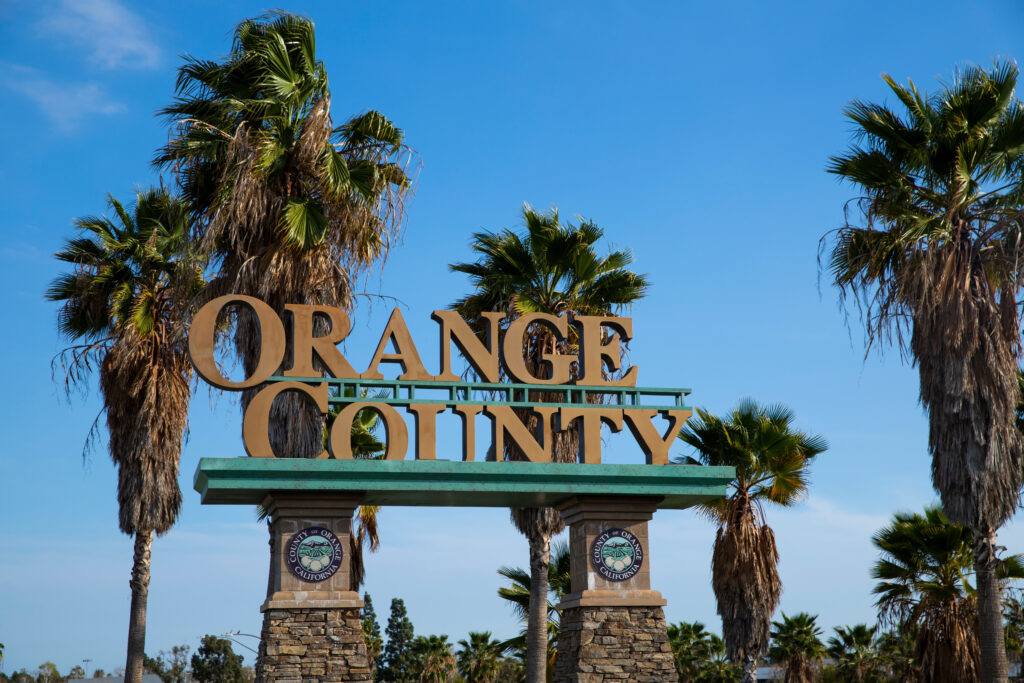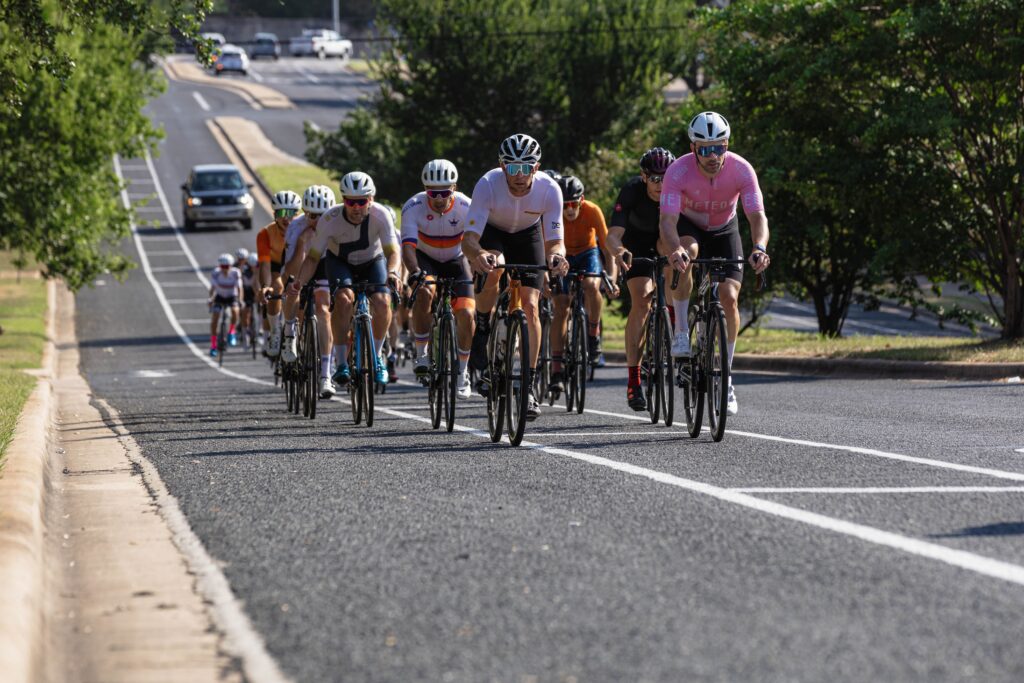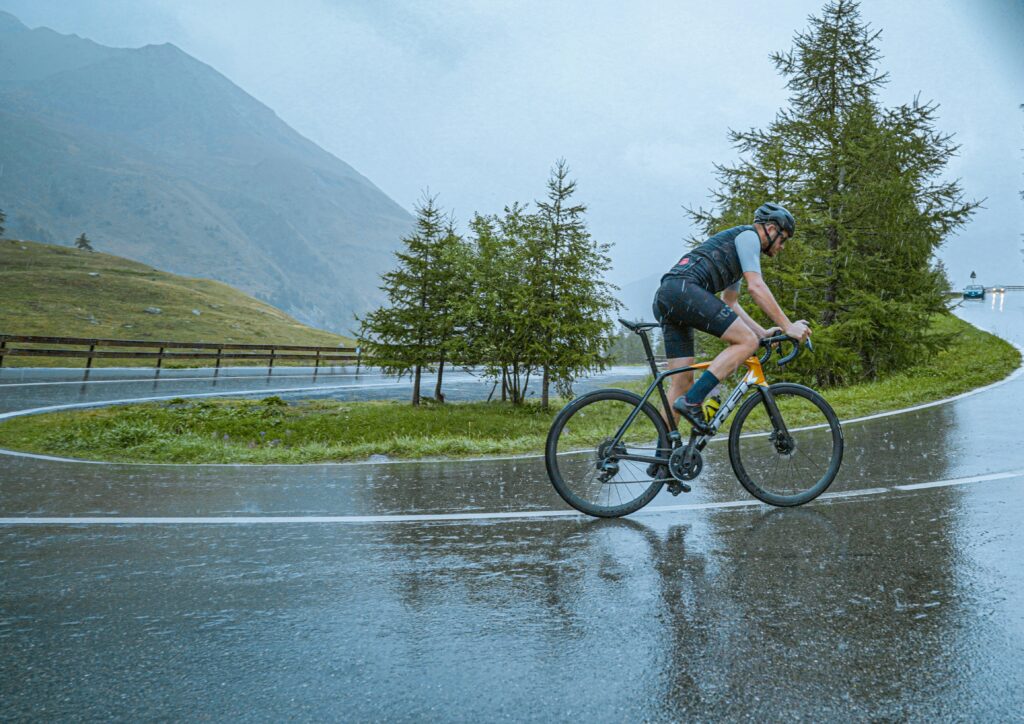How and When to Contact an Orange County Bicycle Injury Attorney

Cycling in Orange County is both a lifestyle and a necessity for many residents. From scenic rides along Pacific Coast Highway to commuting through Irvine, Newport Beach, and Anaheim, thousands of cyclists share the road with cars every day. Unfortunately, this also means bicycle accidents are a common reality — and when they happen, knowing when to contact an Orange County bicycle injury attorney can make all the difference.
Why You Need an Orange County Bicycle Injury Attorney
A bicycle accident can leave you with serious injuries, expensive medical bills, and time away from work. Insurance companies often try to minimize claims, making it difficult for cyclists to get the compensation they deserve. Hiring an experienced Orange County personal injury lawyer
ensures that:
Your rights are protected from the start.
All communication with insurance companies is handled professionally.
Evidence such as traffic camera footage, police reports, and witness statements is collected before it’s lost.
You pursue maximum compensation for medical care, lost income, bike repairs, and long-term recovery.
When to Contact an Attorney After a Bicycle Accident
Timing is key. Here’s when you should reach out to an Orange County bicycle injury attorney:
Immediately After the Accident
Once you’ve received medical attention, contact a lawyer as soon as possible. Early legal guidance strengthens your case.
If You Suffer Serious Injuries
Broken bones, concussions, spinal injuries, or surgeries require extensive care. An attorney can help you recover the costs.
When Fault Is Disputed
Drivers and even police reports may unfairly blame cyclists. A lawyer can investigate and establish liability.
If the Insurance Company Calls
Never give a recorded statement before speaking with an attorney. Insurers may twist your words to reduce payouts.
Before Accepting a Settlement
Insurance companies often make quick, low offers. An attorney ensures you don’t settle for less than you deserve.
Choosing the Right Orange County Bicycle Injury Attorney
Not all personal injury lawyers specialize in bicycle accidents. When looking for the right attorney, consider:
Local expertise – Knowledge of Orange County traffic patterns, bike laws, and courts.
Proven track record – Experience handling bicycle accident cases
specifically.
Contingency fee structure – You don’t pay unless your case is won.
Clear communication – A lawyer who keeps you informed every step of the way.
Protect Your Rights After a Bicycle Accident in Orange County
Recovering after a bicycle accident is stressful enough without fighting insurance companies on your own. By working with a skilled Orange County bicycle injury attorney, you’ll have an advocate dedicated to securing fair compensation so you can focus on healing.
If you’ve been injured in a bicycle accident in Orange County, don’t wait. Reach out to an experienced bike accident lawyer in Orange County
today to protect your health, your rights, and your future.
Top Myths About Road Cyclists Debunked

Many myths about road cyclists create misunderstandings and safety issues. This article debunks the most common myths, providing clear explanations for better road sharing. Whether you’re a cyclist or a driver, this insight will improve your understanding. Key Takeaways Cyclists must follow the same traffic laws as motorists, including the ability to occupy the full lane when necessary for safety. While a minority of cyclists may disobey traffic rules, many adhere to them, and cyclists contribute to road maintenance through various taxes. Advancements like pedal assist bikes make long commutes feasible for cyclists, and properly designed bike lanes enhance safety in busy areas. Myth: Road Cyclists Should Always Stay to the Right One of the most common cycling myths is that road cyclists should always stay to the right, hugging the curb as closely as possible. This misconception stems from a misunderstanding of traffic laws and the practicalities of safer riding. Bicycles are often classified as vehicles, so cyclists must adhere to the same traffic laws as motorists. Cyclists must position themselves according to their speed and the traffic conditions. This often means riding to the right, but not always. For instance, if the lane is too narrow for a bicycle and a car to share side by side safely, cyclists are allowed to take up the entire lane for their safety. Moreover, at intersections, cyclists must yield if they do not have the right of way, just as motor vehicles do. When changing lanes, cyclists are required to yield to traffic in the traffic lane and car lanes they intend to occupy. This ensures that they integrate smoothly and safely into the flow of traffic. Understanding these rules helps both cyclists and motorists navigate roadways safely and efficiently, respecting each other’s rights and responsibilities. Myth: All Road Cyclists Run Red Lights A widespread myth suggests that all road cyclists run red lights, flagrantly disregarding traffic signals. This belief overlooks the responsible behavior of many cyclists who adhere to traffic rules just like other road users. This misconception likely arises from the visibility of the few who break the rules, casting a shadow over the entire cycling community. Most cyclists prioritize road safety and visibility, often positioning themselves in the middle of the street rather than sticking to bike lanes to avoid being unseen by motorists. This strategic positioning can sometimes be misinterpreted as rule-breaking when, in fact, it is a safety measure. Responsible cycling behavior is common, and many cyclists work hard to follow traffic laws and contribute to a safer road environment for everyone. Myth: Road Cyclists Don’t Pay Their Fair Share A common myth is that road cyclists do not pay their fair share for using public roads. This misconception ignores the fact that roadways are primarily funded by general taxation, not just user fees. In fact, only about 8% of roadway funding comes from user fees like gas taxes and registration fees, with the remaining 92% coming from general funds. Cyclists contribute to these general funds through various taxes, including property tax and sales tax. This means that even those who do not own a car still support the maintenance and construction of roads through state and local funding. Additionally, investments in bicycle infrastructure tend to create more local jobs compared to traditional road projects, providing both economic and social benefits. Moreover, active transportation options like cycling lead to broader social benefits, such as enhanced community interaction and reduced crime rates. By understanding these contributions, it becomes clear that cyclists do indeed pay their fair share and bring additional value to the community. Myth: Cycling on Busy Roads Is Too Dangerous The belief that cycling on busy roads is too dangerous deters many potential cyclists. However, properly designed bike lanes and protected bicycle lane paths significantly reduce the risk of accidents. Research shows that cyclist safety improves with the increase in adequate infrastructure and road infrastructure in urban areas. High-traffic locations with well-marked bike lanes are associated with lower injury rates compared to roads without dedicated cycling space. For instance, the installation of separated cycle tracks in roundabouts can lead to a substantial decrease in injury rates among cyclists. These infrastructure improvements make cycling a safer and more viable option, even in busy urban areas. Cyclists need to be aware of their surroundings and use strategies like signaling their intentions and merging into traffic lanes cautiously when necessary for safety. By adopting these practices, cyclists can navigate busy roads more safely and confidently. Myth: You Need Expensive Gear to Ride Safely Many believe that to ride safely, cyclists need to invest in expensive gear. This myth can discourage new cyclists from taking up the activity. In reality, safety can be achieved with budget-friendly options without compromising on protection or comfort. Quality safety equipment, such as helmets and lights, can be found at affordable prices. Reflective materials and lights are essential for visibility, and there are plenty of cost-effective options available. Cycling gloves, which provide protection and comfort, are another example of budget-friendly gear that can enhance the riding experience. Believing that only high-end gear ensures safety is a common cycling myth that needs to be debunked. Myth: Only Athletes Can Be Road Cyclists The idea that only elite athletes can be road cyclists is another myth that needs debunking. Cycling is an inclusive activity that welcomes people of all shapes, sizes, and fitness levels. Many everyday people enjoy cycling, not just elite athletes. There is no specific body type required to enjoy cycling; anyone can participate and benefit from this healthy activity. Cycling is increasingly recognized as a fitness activity suitable for individuals from all walks of life. Consistent riding can help build cycling fitness, and pedal assist bikes make longer trips feasible and enjoyable for many. This versatility shows that cycling can cater to individual preferences and needs, making it accessible to a wide audience. Myth: Road Cyclists Are a Menace to Other Road Users The idea that road cyclists and bicycle riders are
Essential Guide to Uninsured Motorist Coverage for Cyclists

Uninsured motorist coverage offers added protection for cyclists against financial risks from drivers lacking sufficient insurance. On the road, cyclists face vulnerability, and accidents with uninsured or underinsured drivers can cause significant financial strain. It mitigates these risks by covering medical expenses, lost wages, and property damage.
There are two main types of uninsured motorist coverage that cyclists should be aware of: bodily injury and property damage coverage. Uninsured Motorist Bodily Injury (UMBI) coverage helps with medical expenses if a cyclist is injured by an uninsured driver, ensuring necessary medical attention without the full financial burden.
Property damage coverage aids in repairing or replacing a damaged bicycle, protecting the cyclist’s financial well-being.
Adding uninsured motorist coverage to an existing car insurance policy ensures cyclists have vital protection. This addition offers peace of mind, knowing they won’t face financial repercussions alone if an accident with an uninsured driver occurs. Additionally, it can extend to cover lost wages and other associated costs resulting from accidents.
Cycling Accidents in 2024: Key Trends and Safety Tips

Cycling accidents have been a growing concern, with approximately 850 reported bicyclist fatalities occurring annually in the U.S. This represents a significant increase, with bicyclist deaths rising by 42.7% since 2010. The trend has shown no signs of slowing down, highlighting the urgent need for improved bicycle safety measures, especially as bicyclist deaths occurred. Additionally, the total traffic fatalities provide a broader context, showing the overall severity of road safety issues and the need for comprehensive safety strategies.
Rising Toll: Bikers Killed Every Year and How to Improve Safety

In 2022, 1,105 bikers were killed every year while bicycling. This article looks at the statistics, major causes, and ways to improve biker safety, particularly in light of the alarming number of bikers killed every year. Key Takeaways Bicyclist fatalities reached a record high of 1,105 in 2022, highlighting a troubling upward trend since 2010. Motor vehicle collisions, particularly with light trucks, are the leading cause of cyclist deaths, with urban areas accounting for 83% of fatalities. Implementing safety measures such as improved infrastructure, helmet usage, and community engagement are crucial to reducing cyclist fatalities and enhancing overall safety. The increase in people bicycling for commuting and recreation has highlighted the need for improved safety measures. Annual Statistics of Bikers Killed by Fatal Injuries The numbers paint a sobering picture. In 2022, 1,105 bicyclists lost their lives in motor vehicle accidents, the highest recorded fatalities ever. This figure is part of a troubling trend. Bicyclist fatalities have shown a steady increase since 2010, peaking at 966 in 2021. The previous high before 2022 was 1,003, underscoring a consistent upward trajectory. These statistics are more than just numbers; they represent lives cut short and families devastated. In 2021 alone, bicyclists were involved in 2.2% of all traffic fatalities, a stark reminder of the vulnerability of those on two wheels. The average age of cyclists killed in these accidents was 49 years, indicating that this is not just an issue affecting young or inexperienced riders. According to data from the U.S. Census Bureau, the percentage of U.S. workers who travel to work by bicycle has shown fluctuations over the years, indicating changing trends in bicycling habits. The available data from the past decade calls for action. With increased urbanization and more people riding bicycles, the need for improved safety measures is pressing. The rise in fatalities highlights the urgent requirement for comprehensive strategies to protect cyclists. Common Causes of Fatal Bicycle Accidents Understanding the common causes of fatal bicycle accidents is crucial for developing effective prevention strategies. Collisions with motor vehicles often result in severe injuries or fatalities, frequently due to driver distraction, improper lane changes, or failure to yield. Cyclists face heightened risks in urban areas, where traffic density and congestion increase the likelihood of accidents. Additionally, helmet usage plays a crucial role in preventing fatal injuries. Each of these factors uniquely contributes to the overall risk profile for cyclists. Motor Vehicle Collisions Motor vehicle collisions are the leading cause of cyclist fatalities, with light trucks being particularly dangerous. In 2021, light trucks were responsible for 46% of bicyclist deaths. The sheer size and weight disparity between bicycles and motor vehicles put cyclists at a significant disadvantage, often leading to severe injuries or fatalities in the event of a crash. The statistics underline the need for improved safety measures to protect a cyclist injured from motor vehicle collisions. Driver distraction, fatigue, and improper lane changes commonly contribute to these tragic incidents. It’s clear that addressing these issues requires a multifaceted approach, including better driver education and stricter enforcement of traffic laws. Urban Area Risks Urban areas pose significant risks for cyclists, with a staggering 83% of cyclist fatalities occurring in these environments. The higher volume of traffic and congestion in cities contributes to increased rates of fatal bicycle injuries. In 2021, urban areas saw around 85% of bicyclist fatalities, up from 69% in 2011, highlighting a growing problem. The high traffic density and frequent interactions between vehicles and cyclists in urban settings create a dangerous environment. Enhancing urban infrastructure and reducing traffic congestion can significantly improve cyclist safety. Helmet Usage Helmet usage is crucial in preventing fatal injuries in bicycle accidents. Wearing a helmet can reduce the risk of severe head injuries by up to 73%. Despite this, data shows that 62% of bicyclists killed in 2022 were not wearing helmets, underscoring the importance of this simple yet effective measure. Helmets provide essential head protection, significantly decreasing the severity of injuries in a crash. Encouraging more cyclists to wear helmets could dramatically reduce fatalities and serious injuries. Risk Factors for Cyclists Several risk factors contribute to the high rate of cyclist fatalities. Most fatal crashes occur during dawn, dusk, or nighttime, accounting for 56% of all cases. Poor visibility during these times increases the risk. Additionally, adverse weather conditions can impair a cyclist’s control and decrease visibility, making it crucial to adapt speed and use reflective gear. Implementing safety measures like proper bike maintenance and wearing protective gear can significantly lower the chances of accidents and fatalities. Enhancing street lighting and ensuring cyclists are visible to drivers are crucial steps in reducing these risks. Impact of Speed Limits on Bicycle Safety Speed limits play a crucial role in bicycle safety. Reducing average vehicle speeds can lead to significantly fewer bicycle accidents and less severe injuries. A motor vehicle traveling at 25 mph poses a lower risk of serious injury to cyclists compared to one at 40 mph. Effective speed management strategies, such as lowering slower speed limits and implementing automated speed enforcement, can enhance safety for cyclists. The design of public roadways can also be modified to naturally calm traffic, further enhancing safety for cyclists. Reducing speed limits in busy areas can create safer environments that encourage more cycling and walking. Legal Aspects and Compensation for Families Families of cyclists killed in accidents have legal options to seek compensation. A wrongful death claim can cover funeral costs and the loss of financial support from the deceased. Compensation in bicycle accident lawsuits can also include medical expenses, lost income, pain and suffering, and property damages. Consulting a personal injury attorney can help victims and their families navigate the legal process and secure fair compensation. The clarity of fault in an accident significantly influences the potential settlement amount. Safety Measures to Reduce Fatalities Implementing safety measures is crucial to reducing cyclist fatalities. Adverse weather and lack of adequate safety equipment significantly raise the injury risk for cyclists in crashes. The following subsections
Top 10 Rules of the Road for Cycling Safety Tips

Looking to cycle safely on the road? This article provides the 10 rules of the road for road cycling that you need to know. Follow these key guidelines to ensure a safer and enjoyable ride. Key Takeaways Wearing a helmet is essential for preventing serious head injuries and is legally required in many states. Cyclists must use hand signals to communicate their intentions and obey traffic laws to ensure safety on the road. Staying visible with bright clothing, reflective gear, and lights, as well as using dedicated bike lanes, significantly enhances road cycling safety. Always Wear a Helmet Wearing a helmet is crucial for preventing head injuries during a bike ride. Statistics show helmets can reduce serious head injuries by up to 60%, making them an essential part of your cycling gear. Imagine the peace of mind knowing your helmet could be the difference between a minor fall and a life-threatening injury. Many states require bicyclists to wear helmets by law, underscoring the responsibility to protect yourself. This legal requirement ensures every cyclist is taking necessary precautions. Not wearing a helmet can also lead to fines, adding a financial incentive to stay safer. Wearing a helmet is simply a smart decision. Accidents can happen to even the most experienced cyclists, and the head is one of the most vulnerable parts of the body. Donning a helmet is a proactive step in ensuring your safety and that of your fellow cyclists. Use Hand Signals Communication is key to road safety, and hand signals are vital. Using hand signals allows you to convey your intentions to drivers and other cyclists, reducing the risk of collisions. For instance, to indicate a left turn, extend your left arm straight out. This simple gesture alerts motorists to your movements, helping them anticipate and react during lane changes. For a right turn, you have two options: extend your right arm straight out or bend your left arm upward at a right angle. To signal that you are slowing down or stopping, extend your left arm downward with your hand open. These signals are part of the rules of the road and are crucial for avoiding misunderstandings and accidents. Obey Traffic Signs and Signals Cyclists share the same rights and responsibilities as motorists, which means adhering to all traffic laws. This includes stopping at stop signs, obeying traffic signals, and yielding the right of way when necessary. Non-compliance with traffic laws can lead to legal consequences such as fines and citations. More importantly, it significantly increases the risk of accidents. Each year, many cyclists are involved in collisions because they fail to observe these rules. Following traffic regulations helps maintain a predictable flow of traffic, enhancing safety for all road users. Riding predictably is crucial. When drivers can anticipate your actions, the likelihood of accidents decreases. This includes using hand signals, looking over your shoulder when changing lanes, and making your intentions clear to other road users. These practices keep you safer and foster a cooperative road environment. Ride in the Same Direction as Traffic Riding in the same direction as traffic is fundamental for cyclists. It reduces the risk of collisions and makes your movements more predictable to motorists. Riding against the flow of traffic confuses drivers and increases the chances of accidents. Predictability helps motorists anticipate your actions, making the road safer for everyone. This approach prevents accidents and ensures you are visible and expected on the road. Riding in the same direction is not just about safety; it’s also about legal responsibility. Cyclists must follow the same traffic laws as motorists, including riding with the flow of traffic in a straight line. This practice aligns with broader principles of road safety and legal compliance. Stay Visible with Bright Clothing and Lights Visibility is crucial for bicycle safety. Wearing bright clothing, reflective gear, and using lights can significantly improve your visibility to drivers. Bright colors and reflective materials on your clothing can catch the attention of motorists, especially in low-light conditions. At night, using lights is essential. A red rear light and a front light can make a huge difference in how well drivers see you. These lights help you see the road ahead and ensure you are seen by others. In addition to lights and bright clothing, riding in the same direction as traffic increases your visibility. Following the rules of the road makes it easier for drivers to spot you and anticipate your actions, making the road safer for everyone. Use Dedicated Bike Lanes When Available Dedicated bike lanes enhance cyclist safety by providing a separate bike lane from motor vehicles. These lanes reduce the risk of injury and improve the overall flow of traffic. Using bike lanes contributes to better traffic management by giving cyclists a clear area to ride, minimizing conflicts with motor vehicles. This separation makes it easier for both cyclists and drivers to navigate the roads safely. The presence of bike lanes can encourage more investment in cycling infrastructure, promoting a safer and more bike-friendly environment. Using these lanes, cyclists not only protect themselves but also advocate for better cycling conditions in their communities. Avoid Riding on Sidewalks Riding on sidewalks can be dangerous for both cyclists and pedestrians. Cyclists can crash into pedestrians, lose control on uneven surfaces, and surprise drivers who are not expecting them. Drivers often do not expect cyclists on sidewalks, increasing the risk of accidents when crossing streets or driveways. By avoiding sidewalks and using bike lanes instead, cyclists can ensure a safer environment for everyone. Be Cautious Around Parked Cars One common hazard for cyclists is “dooring,” where a parked car door opens unexpectedly into the cyclist’s path. To prevent such incidents, maintain a distance of at least 4 feet from parked cars. Cyclists should also slow down when approaching parked cars to increase their reaction time and account for blind spots. This extra caution helps avoid sudden accidents and ensures a smoother ride. Vigilance is key. Always watch for drivers who
Top Tips for Cycling in the Rain: Stay Safer and Enjoy the Ride

Cycling in the rain can be challenging, but with the right preparation, it can also be enjoyable. In this article, we’ll provide you with essential tips and gear recommendations to stay safe, dry, and comfortable during wet weather rides.
The Road Cyclist’s Guide to San Diego: Navigating Bicycle-Friendly Infrastructure, Laws, and Local Initiatives

The City of San Diego’s Bicycle Master Plan (2013) provides a comprehensive framework to expand and improve the bicycling infrastructure in the region. This plan aims to create a viable environment for cycling, particularly for short trips under five miles, while aligning with San Diego’s broader goals of improving public health, environmental quality, and mobility.
Cyclist Tragically Killed in Car Crash in Point Loma

A recent fatal accident in Point Loma tragically claimed the life of a 70-year-old cyclist. The collision occurred when a 92-year-old driver made a left turn at the intersection of Canon and Evergreen Streets, striking the cyclist. Despite the immediate response of emergency services, the cyclist was pronounced dead at the scene. This incident has reignited concerns about the safety of vulnerable road users, particularly in high-traffic areas like Point Loma, where cyclists frequently navigate dangerous intersections. Bicycle fatalities in California are a significant concern, with the state ranking among the highest in the nation for cycling deaths. In 2021 alone, 125 bicyclists were killed in motor vehicle crashes across California, accounting for 2.9% of the state’s total motor vehicle fatalities. San Diego County, where Point Loma is located, reported 16 cyclist deaths in 2021, making it one of the top five counties in the state for such incidents. The primary causes of fatal bike crashes include unsafe speed, improper turns, and failure to yield the right of way, highlighting the critical need for better infrastructure and awareness campaigns to improve cyclist safety. While efforts have been made to improve road safety, including expanding bike lanes and enforcing traffic regulations, these measures have not been enough to prevent fatalities. Advocacy groups continue to push for more protective measures for cyclists, such as stricter speed limits in residential areas and improved signage at dangerous intersections, as seen in Point Loma. This tragic case, combined with the alarming statistics, emphasizes the urgent need for both cyclists and motorists to exercise greater caution and for cities to invest more in infrastructure that can protect the lives of cyclists. Our deepest sympathies go out to the family our our lost brother.
Cycling in the Grand Canyon State: Guide to New Arizona Bicycle Laws for 2024 and 2025

As Arizona continues to grow in popularity as a destination for cyclists, whether for recreation or commuting, state legislators and city governments have taken steps to ensure the safety and accessibility of bicycling on public roads. For 2024 and 2025, several new laws and proposed ordinances are designed to address emerging issues in cycling safety, road-sharing, and infrastructure development. This article provides a detailed overview of the latest legislative changes affecting cyclists across the state, as well as proposed local ordinances in major cities like Phoenix, Tucson, and Flagstaff.


